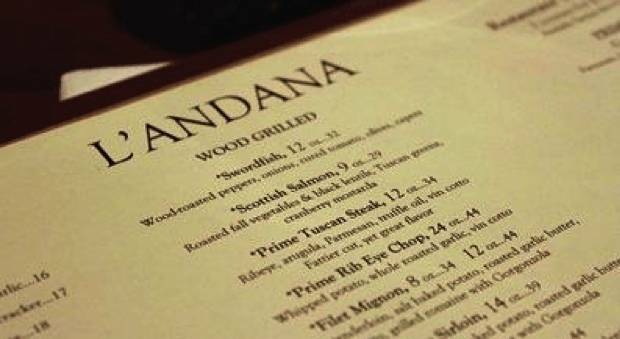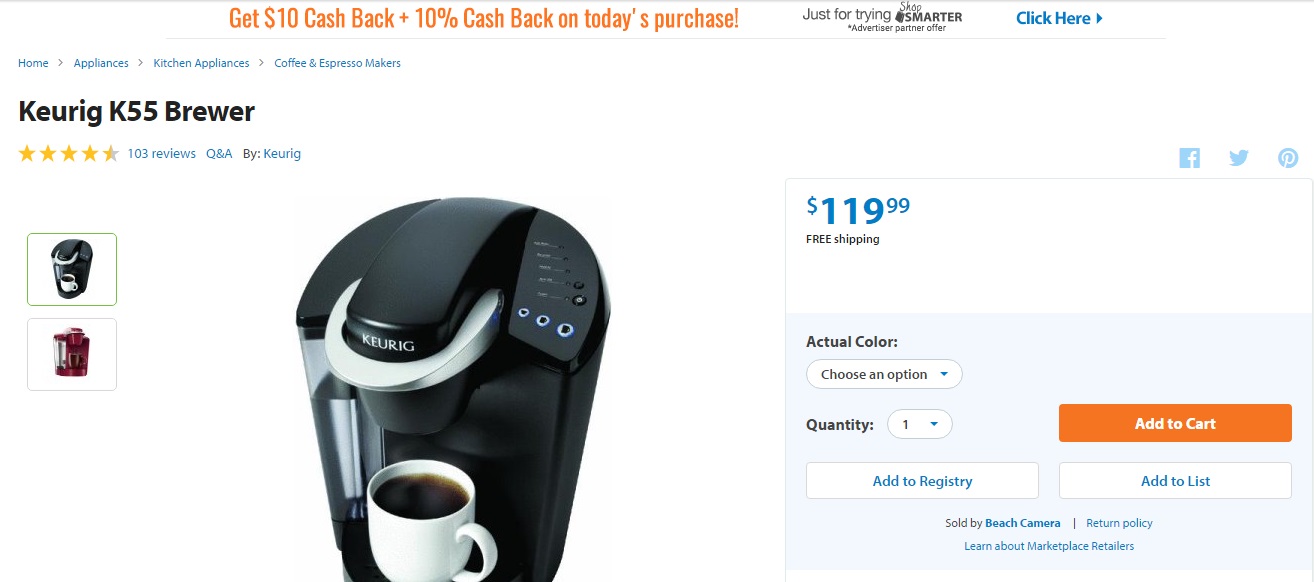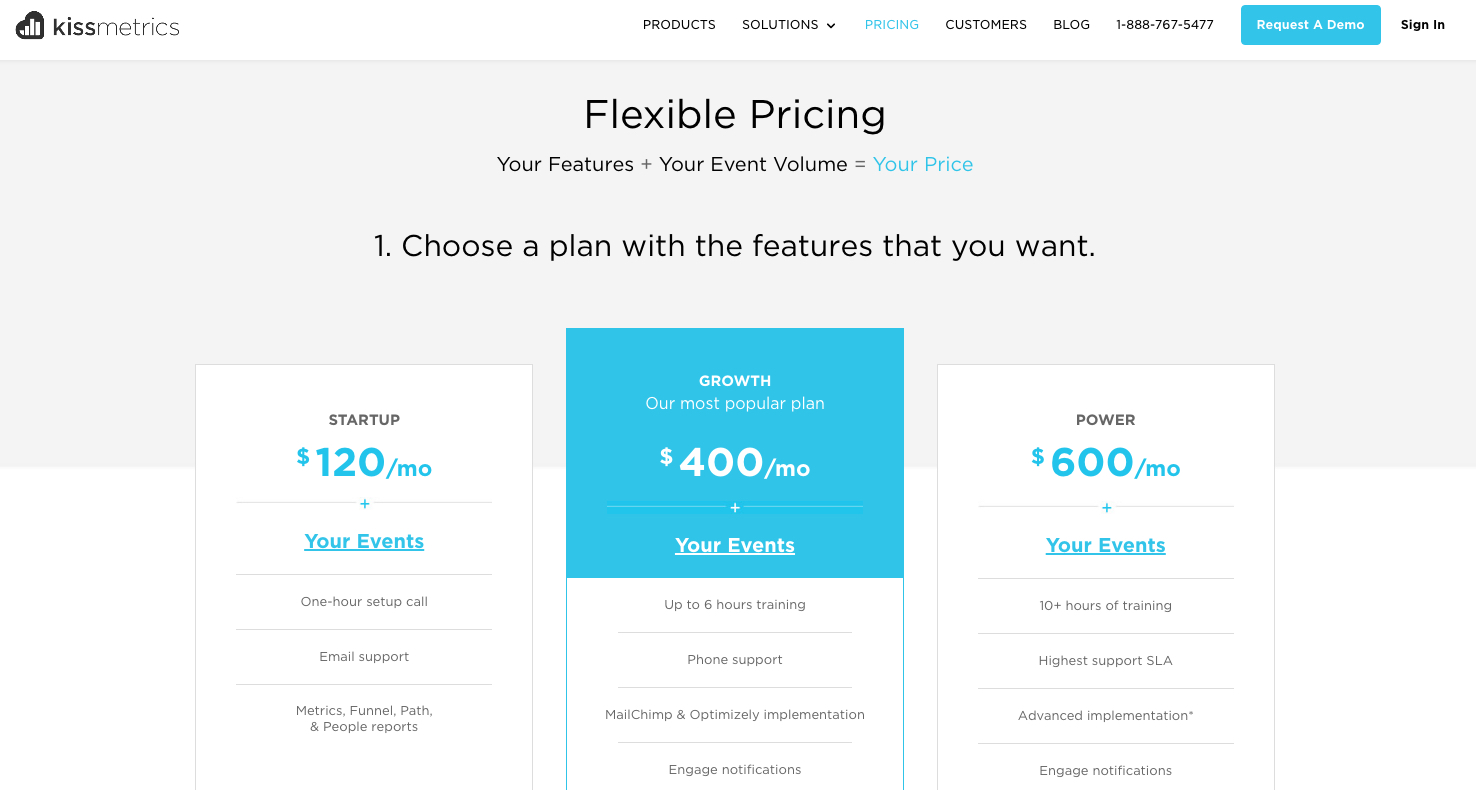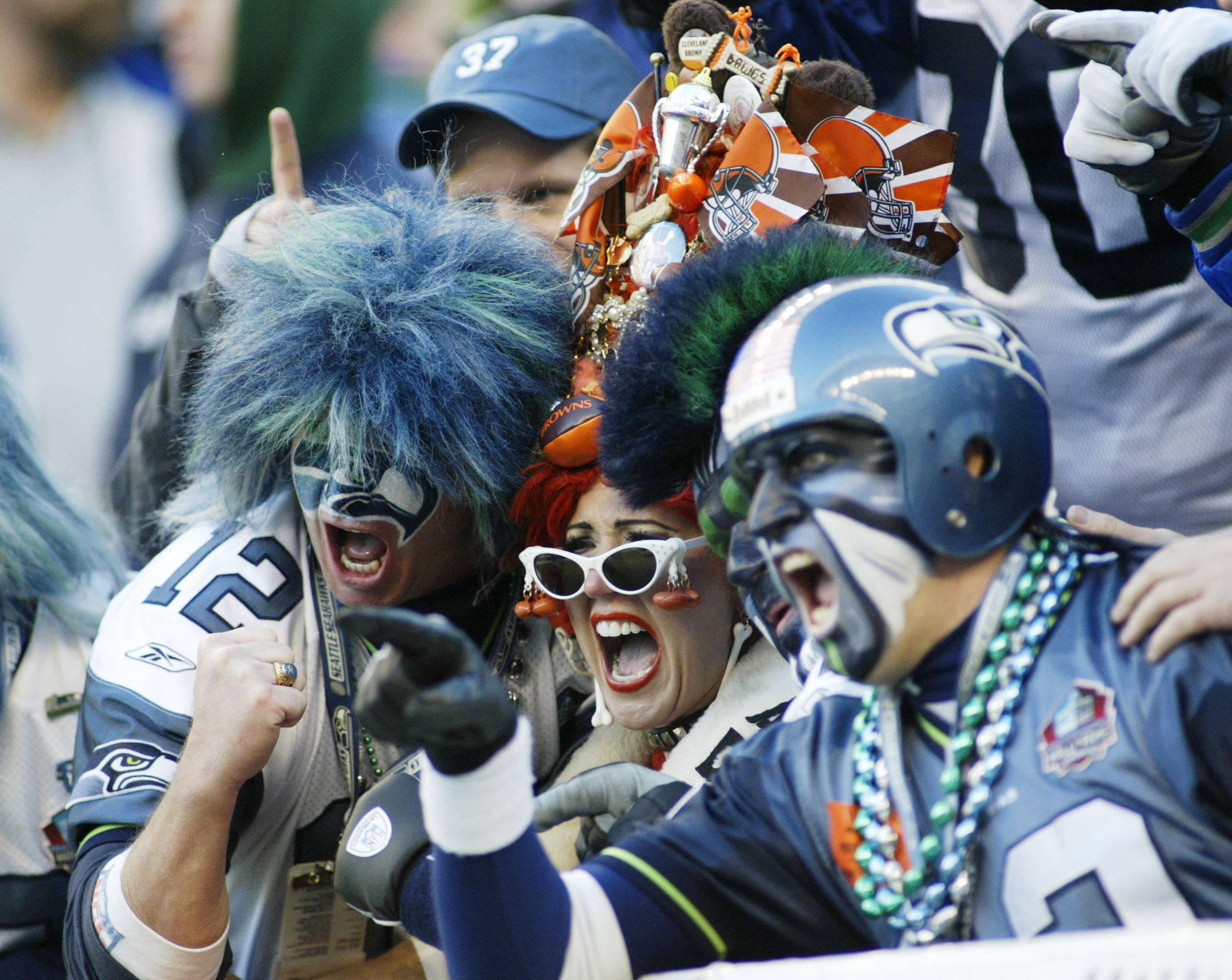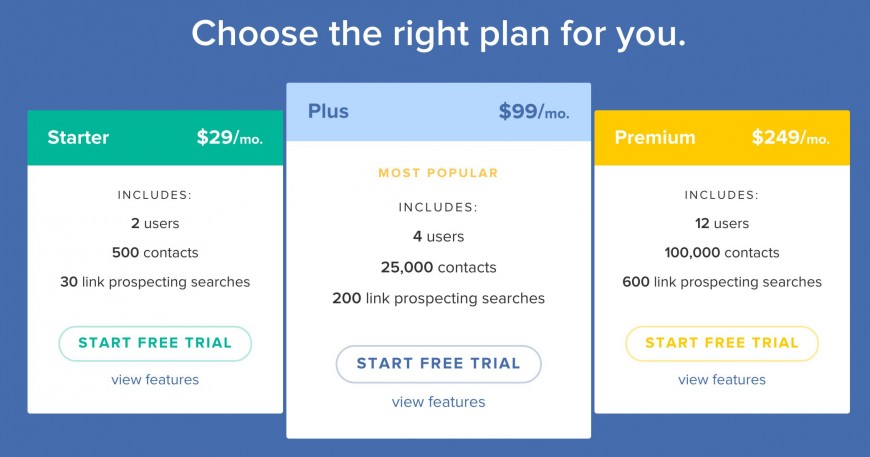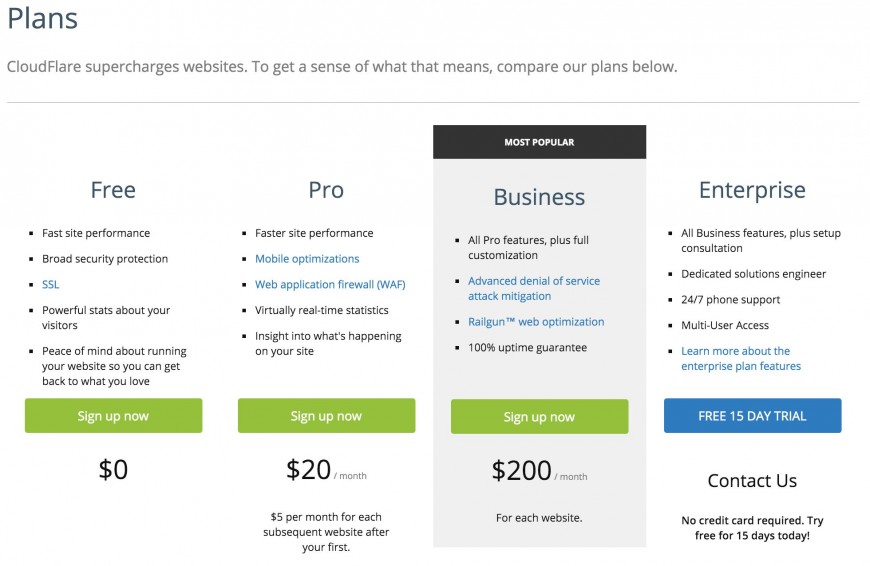9 Psychological Insights I Use When Designing a Pricing Page - Quick Sprout
9 Psychological Insights I Use When Designing a Pricing Page - Quick Sprout |
| 9 Psychological Insights I Use When Designing a Pricing Page Posted: 22 Aug 2016 08:15 AM PDT Let me be upfront with you. I'm not a web designer. I work with some amazing web designers. I know a few things about web design. But when it comes right down to it, I'm not a designer. What am I? I'm a marketer. Why am I talking about designing a web page, specifically a pricing page? Here's why. Web design and marketing overlap. A lot. When you get into a discussion about web design, you can't help but talk about psychology. And when the page being designed is a pricing page, psychology plays a huge role. What kind of psychology? Customer psychology. Customer psychology is the study of the way people think, act, decide, and make purchases. It has everything to do with motivation, mind tricks, color, placement, filtering, eye tracking studies, and, yes, web design. That's why I'm confident in my ability to design a great pricing page. I constantly A/B-test my pages to make sure I'm choosing the most optimal design, and most of the design choices you see throughout my web properties is based on simple psychological principles. Psychology is common in marketing and design, regardless of the industry. Look at a casino, for example.
Every inch of that building, from the carpet and floor designs to the signs and turns was designed to psychologically keep people in the building spending money, not focusing on time and outside responsibilities. Web design is the same way. And when it comes to the pricing page, these psychological principles are extremely important. Here are a few of the tactics I use when designing pricing pages—one of the most important steps in your conversion funnel. 1. Devalue money in the viewer's eyesSince we're on the subject of Las Vegas… Another trick casino owners use is the idea of mentally devaluing money. When you step up to a table, they exchange your money for chips.
Why? There are several reasons. One is that it makes it easier for dealers to count, but it also detaches people from the value of their money. It's easier to gamble away two chips than $2,000. A lot of people are in debt, and, while it's great that you run a business, you need to get people to stop thinking about their bills. The average user who looks at your pricing page might have in the back of their mind their consumer credit card debt.
Maybe you're not running a casino. How do you get people to stop thinking about their debt problems and instead focus on the value of your product, regardless of the price? Let me give you an example. Cornell researchers recently partnered with the Culinary Institute of America to research this concept of devaluing money on restaurant menus. Two different study groups were given two different menus, one with a dollar sign next to the pricing and one without.
The group given the menus without the dollar sign spent more money. Why? Because they weren't put off by the high $ price. One example I've shown elsewhere is this pricing page. Notice the small dollar signs?
That's not a mistake. The same thing is happening here:
The dollar sign serves as a trigger to remind people of the value of money. What they should be thinking about is the value of your product. A simple removal or minimization of the dollar sign will make your pricing page more compelling, more powerful, and more psychologically potent. 2. Color-coordinate everythingResearch from the US National Library of Medicine and National Institutes of Health indicates colors are perceived in different ways by different people based on experiences, genetics, context, and other factors. Still, there are brands of every kind that use specific colors within their logos.
If you're at the beginning stage of building your company, choose a color scheme that matches the emotion you're trying to evoke. There was a time when Geocities ruled the web and websites commonly looked as though they were drawn by crayons. Thankfully, we've progressed, so basic black text on a white background is considered standard for text (with a few exceptions). Headers and buttons, however, can vary greatly. Amazon uses a yellow color for the "Add to Cart" button on its pricing pages.
Walmart uses a red-orange.
Best Buy utilizes bright blue and yellow for different options.
Whatever you choose, make sure it speaks to your brand and is consistent all the way through to avoid confusing customers at a crucial step. 3. Size mattersSize does matter when designing a pricing page. Here's the simple truth. You want people to see the important parts first because that's what needs to stick with them the longest. Let me go back to this pricing page to show what I mean:
What's the first thing you look at when you see this page? Probably the center column, focusing on the "Growth" package at $400 a month. Why? Because it pops with a vivid blue against a very light gray backdrop. Plus, it's bigger than the others. Size is important. It's also centrally located. All of these are key differentiating features that psychologically emphasize the importance and superiority of that plan. Where exactly does size matter?
As explained in Psychology in Action, larger fonts make messages enter our brains faster as we don't have to struggle to see them. This split-second difference of time and attention puts the page into a logical and cohesive, Feng Shui-like, order for browsers. 4. Limited time offersIf someone thinks their time to act is limited, they're more likely to take action quickly rather than delay it. Several studies have looked at how limited time offers affect our brains. Sites such as eBay and Groupon have practically built empires on the concept. Essentially, it boils down to supply and demand. When you create scarcity, the perceived value of an item goes up. It's called a theory of psychological reactance, which explains why we hate to miss out on a golden opportunity when presented with it. You've probably heard of fear of missing out, or FOMO, right? Same idea, different angle.
Amazon uses this technique to great effect with constant inventory reminders on every item: "Only 10 left in stock – order soon." It's a great call to action.
Even though we know one of the world's largest fulfillment centers will definitely replenish its supplies of literally everything, will it happen soon enough? Can we wait and will it be more expensive next time? Dr. Eldar Shafir, from Princeton, and Dr. Sendhil Mullainathan, from Harvard, explored how people's minds work when they feel they're lacking something. The perception of scarcity leads them to make mistakes or bad financial decisions, spending more money than they should. Psychology Today’s author Shahram Heshmat notes,
It also motivates us to prioritize our choices, e.g., we're more frugal with toothpaste when the tube is close to empty, and we rush to purchase a product or service to obtain a deal. 5. Discounts and VIP membershipPeople love feeling like they belong. Costco, Sam's Club, and AAA are just a few of the memberships you can get these days to feel like you're part of a country club. Everyone wants to be a VIP, so offering VIP membership bonuses and discounts encourages customers to keep spending money at your business. Instead of buying just one roll of paper towels, you can subscribe and save.
Or buy 10 and get one free. These promotions increase clicks because, as Ian Newby-Clark explains in Psychology Today,
It's like a drug: belonging to something bigger than yourself provides a sense of purpose and meaning to our lives. Marketing Profs has a great article describing how the inclusion of fans into a community motivates them to support a brand both as customers and ambassadors. I suggest you take a look at it as it's a great read. As psychologists point out, our social identity is defined by the groups we belong to. This is why Xbox and PlayStation fans, for example, are so prone to debating their platform's superiority.
The NFL, along with all other major sports organization in America, uses this psychological principle to its advantage. Fans show up sporting their team's colors and mascot costumes because it makes them feel like they belong.
Above: Seattle Seahawks fans surround a Cleveland Browns fan Sunday, Nov. 30, 2003, at Seahawks Stadium in Seattle. (AP Photo/Ted S. Warren) 6. Offer tiered pricing
Hyperbolic discounting occurs when different pricing models provide different benefits, allowing us to personalize our shopping experience. Companies such as BuzzStream and CloudFlare employs this technique: BuzzStream pricing plan
CloudFlare pricing plan
Choice-supportive pricing, anchoring effect, and the decoy effect can also be employed to your advantage. With tiered pricing, anything is possible. Amazon has about a dozen varieties of Prime combined with rewards cards, affiliate bounties, and subscription services to give you payment options beyond just "cash or credit." Tiered pricing is becoming even more popular these days with the growth of the software-as-a-service (SaaS) business model. By subscribing for longer terms, people know they can often save money and thus seek out these types of deals. Rational choice theory is a framework to model social and economic behavior. It states individual actors choose the option that maximizes their interests and provides the greatest benefit. A tiered pricing model provides customers with purchasing options that are all, ultimately, with you. 7. Doorbusters workRetail has long utilized doorbusters to get people in the doors. These savings are responsible for Black Friday leaking further into Thanksgiving every year. Once you have people in the door to buy a low-priced item, you can upsell them better, more expensive products. Any pricing page should also have a "recommended" and "similar" section. These personalized offers help lead consumers to buy the right item for them, increasing trust in your e-commerce brand along with the ROI. It should be noted, however, you should avoid the classic bait-and-switch scam that will get you in trouble with the FTC and ruin the reputation of both you and your brand. It’s also worth mentioning that many analysts think Black Friday is about more than just the doorbusters.
Professor Jane Thomas at Winthrop University says:
There's also a psychological difference in the way we perceive prices such as $13.99 vs $14.00. The item priced at $13.99 is more likely to sell because even though it's only a penny short, it's $13 and change instead of $14. Although consumers initially hit a website looking for a cheap deal on SEO services, soon they realize they're also missing social media, video, CRO, PPC, and many other aspects of marketing. They want more. That's the value of the doorbuster. The initial doorbuster brings them to you for a killer deal. You get them in and then convert them to buy more stuff. 8. Get smaller yeses firstMuch like with the doorbuster sale, you want to lead people by convincing them to agree to smaller things before hitting them with the big ask. Zendesk does a great job of leading customers through smaller yeses first:
While the option is there to buy, Zendesk wants you to try the free version first because they're confident you'll come back as a paying subscriber once you've experienced the platform. Who doesn't like free stuff? By convincing customers to say yes to the smaller ask first, you make saying yes to the bigger ask much easier.
explains Heidi Grant Halvorson, PhD. Making the pie bigger for everyone increases the maximally efficient outcome 79% of the time. You don't have to necessarily give out anything for free either. As explained above, even month-to-month subscriptions are a smaller ask than a year-long contract, so providing different levels of the same offer will do the trick. 9. Provide choicesAs explained above, offering both payment and product choices is a great way to improve revenue on pricing pages. A customer is buying a TV, do they need a warranty? Cables? A stand or mount? A DVD Player, home stereo system, or Chromecast? Give people options for bundles, add-ons, and other available sizes, colors, and brands. But don't give them so many options that they get overloaded. In 2000, researchers S.S. Inyengar and M.R. Leper conducted a study allowing supermarket shoppers to sample the different flavors of jam available for purchase. The test compared the impact of having 24 jam flavors to choose from versus having only 6. Only 3% of those who sampled the 24 flavors went on to purchase the jam, compared to 30% who sampled only 6 flavors. Too many options will inhibit your customers' ability to make a clear decision. ConclusionPsychology is important in web design and marketing. How people perceive a brand is directly impacted by the appearance of every landing page, including the pricing, checkout, and confirmation pages. By A/B-testing different versions of those pages, while implementing the psychological principles discussed above, you'll be able to optimize conversions and revenue streams from your online marketing. What psychological techniques help you design your web properties? |
| You are subscribed to email updates from Quick Sprout. To stop receiving these emails, you may unsubscribe now. | Email delivery powered by Google |
| Google Inc., 1600 Amphitheatre Parkway, Mountain View, CA 94043, United States | |



